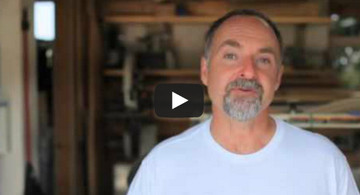Q: Is it wise to remove attic insulation and replace it with spray foam on the underside of roof sheathing? My brother recently moved from a cold climate to Florida and had all the attic batt insulation taken out from the attic floor. Vents were plugged and spray foam applied to the underside of the roof sheathing. This reduced attic temps to within 5ºC of his house temperature and lowered the air conditioning load a lot. Is this a good strategy in both cold and hot climates?
- Reading Time = 2 1/2 minutes

A: I’m not crazy about this approach for a couple of reasons. Considering the trouble of removing and disposing of the old and perfectly good insulation, and the expense of applying spray foam (quite costly), the pay-off doesn’t seem to be there. Yes, an attic will be cooler this way, and this will reduce air conditioning costs. But for most situations you can accomplish the same thing with an electric attic fan. They’re thermostatically controlled and do a great job moving hot attic air outside. With a fully sealed attic like your brother now has, issues with stagnant air and moisture build up can occur. Imagine what will happen in your brother’s hermetically sealed attic if his roof ever leaks. There’s no place for the moisture to go, so it will sit there and fester, triggering mold and rot. Attic fans, by contrast, in a ventilated attic, ensure there’s never any stale air, dampness or condensation building up.
On a related note, traditional organic asphalt shingles will curl and fail quickly over an unvented roof like your brother has now. The reason is high heat. With spray foam insulation applied to the underside of the roof sheathing, the roof surface will get exceptionally hot in summer – way too hot to touch. This is no problem with fibreglass shingles in this situation, but traditional organic asphalt simply can’t take the heat. Do you know what kind of roof your brother has? If it’s organic shingles they probably won’t last five years even if they’re brand new now.
All this said, I’m a big fan of under-roof insulation, but only when it’s part of a larger plan to create a livable attic that can be ventilated by opening windows or skylights. So many homes could have so much more living space if the area under a roof was finished and insulated. I don’t see the value in insulating the underside of a roof if the attic remains unliveable.
More homes should have liveable attics. Click here for an overview of the attic-finishing process.
 Did you find this article useful? I hope so. Please consider helping me cover the cost of creating and publishing content like this. Click the “buy me a coffee” button below for a fast, safe and simple way to make a contribution. Thank you very much for helping to keep this website up and running.
Did you find this article useful? I hope so. Please consider helping me cover the cost of creating and publishing content like this. Click the “buy me a coffee” button below for a fast, safe and simple way to make a contribution. Thank you very much for helping to keep this website up and running.
– Steve Maxwell












